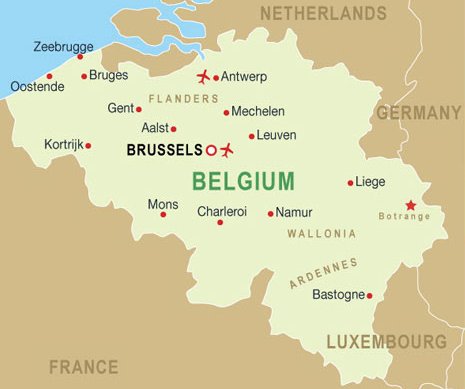Giant crabs and great white sharks - the wild side of Europe
 Brussels - Europe is not generally known for its spectacular wildlife: the continent's manicured fields and mountains are the last place most visitors would expect to see exotic, savage animals.
Brussels - Europe is not generally known for its spectacular wildlife: the continent's manicured fields and mountains are the last place most visitors would expect to see exotic, savage animals.
But in fact, the continent is home to a staggering variety of colourful, bizarre and even deadly wildlife - as long as you are willing to go under water to find them.
Take the Great White Shark, for example. The razor-toothed star of the Jaws films is feared along beaches from Australia to Florida.
But it is just as much at home in the Bay of Biscay or cruising the waters of the Mediterranean - something worth bearing in mind the next time you plan a dip mid-ocean.
Or consider the barracuda. The great silver fish are a familiar sight in the Caribbean and the Red Sea, where they gather in massive, swirling schools off the tip of the Sinai Peninsula.
But they also frequent the Mediterranean and the Canary Islands, where they hang like knives in the water, waiting motionless for prey to swim into range.
Far to the north, in the cold, clear waters of Norway, another monster is heading south.
The red king crab, an armoured behemoth whose body is larger than a man's head and whose legs can spread 2 metres, evolved off Russia's Pacific coast.
Soviet researchers introduced the species, which is considered a delicacy, into European waters in the 1960s. Since then, the population has exploded, spreading deep into Norway's fjords and sparking alarm among environmentalists - and those divers who come across the crabs unexpectedly.
Europe's seas are not just marked by their giants: smaller species are just as capable of inspiring surprise, fascination or even panic.
The cuttlefish can be as small as 15 cm in length, and looks like a cross between an octopus and an eggshell. Most often sighted as a dull-brown shape skimming close to the seabed in sandy waters from the English Channel to the Azores, it seldom attracts much attention.
But the animal - technically a mollusc, not a fish - can change colour in a flash to brilliant red or pulsating blue, to warn other cuttles of danger or invite them to mate.
It has even been known to mimic scuba divers, copying their finger signals with movements of its own tentacles.
Smaller still, the Mediterranean anemone goby grows to no more than 10 centimetres long. It is an undistinguished grey-green colour with black spots, remarkably like the US Army's latest camouflage pattern, and spends its days scavenging around the poison-tipped tentacles of the Mediterranean snakelocks anemone.
Uniquely among European fish, the goby is immune to the anemone's sting, allowing it to hide inside when danger threatens, like a camouflaged version of the clownfish stars of the animated film Finding Nemo.
And if the 6-metre Great White Shark is the stuff of most divers' nightmares, the 60-centimetre grey triggerfish is likely to be more of a problem: it is so protective of its eggs that it will attack anything that comes near.
That includes barracuda, sharks, and even groups of divers, who have been known to shoot to the surface like champagne corks in panic, with a berserk triggerfish parent snapping at their fins.
Tragically, this treasure trove is under threat: pollution, climate change and overfishing are devastating Europe's seas.
But at least for now, the best advice for anyone who wants to see the wild side of Europe is get on your mask, and dive. (dpa)